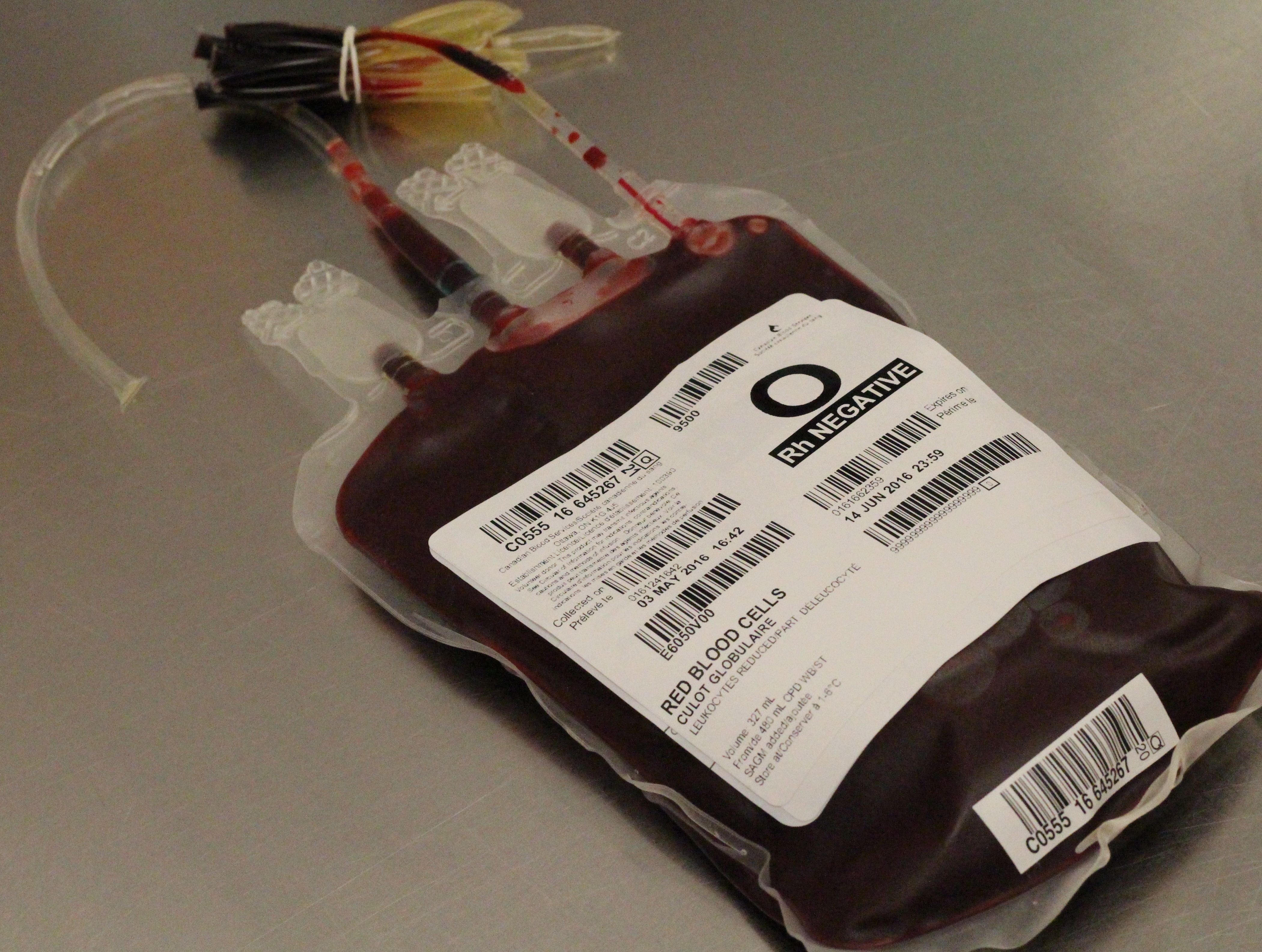O Rh negative red blood cells utilization and inventory management best practices
What is the challenge?
Image

- General population – approximately 6-7% of individuals in the general population are group O Rh negative.
- Canadian Blood Services’ whole blood donors – approximately 10% of Canadian Blood Services donors are group O Rh negative.
- Hospital demand – approximately 12% of all RBC issued to hospitals by Canadian Blood Services are group O Rh negative.
Although best practices have improved, managing the inventory of this precious resource because of the numbers outlined above remains a challenge. In July 2014, the Canadian Blood Services hospital liaison specialist team contacted 20 hospitals in Canada that were the top users of group O Rh negative red blood cells. We asked them to share their hospital’s best practices for effectively managing the utilization of this precious and finite resource.
We thank all hospitals that participated and are pleased to share the collected responses:
Best practice #1: Develop and implement a policy for hemorrhaging patients whose blood group is not known.
- Immediately collect a blood sample for ABO/Rh from all trauma patients upon admission to the emergency department.
- Transfuse male trauma or hemorrhaging patients regardless of age with group O Rh positive red blood cells until their blood group can be determined or unless known to have anti-D.
- Determine the optimal maternal age restriction for women served by your hospital (Bhella S. et al., 2012), and transfuse female trauma or hemorrhaging patients above the optimal child bearing age with group O Rh positive red blood cells until their blood group can be determined or unless known to have anti-D.
- Have a policy to switch patients to their own blood group once known.
- Have a policy for switching known Rh negative hemorrhaging patients to Rh positive red blood cells unless known to have anti-D. Define the trigger at which point the patient will be switched, and if medical director consultation is required each time.
Best practice #2: Develop and implement policies for optimal inventory management
- Small rural hospitals should stock a mix of O Rh positive and Rh negative red blood cells.
- Revaluate optimal inventory levels on a regular basis or after hospital organizational/clinical program changes, especially those that will reduce red blood cell demand. Promptly notify your local Canadian Blood Services centre of any adjustments.
- Transfuse oldest units first unless there are other clinical considerations.
- Always request group specific units for patients with red blood cell antibodies. Only use Rh negative substitutions if group specific is not available for the scheduled transfusion date. Notify your local Canadian Blood Services centre immediately for any difficult to fill antigen negative requests, especially those that will require ongoing transfusions.
- Reduce inventory tagged for specific patient use, using strategies such as crossmatch on demand/electronic crossmatch, type and screen, and a maximum surgical blood order schedule.
- Cancel inventory tagged for specific patients after 24 hours or immediately after imminent need has passed and make allowances for patients with red blood cell antibodies.
- Share inventory between affiliated hospital sites.
- Track Rh negative transfusions to Rh positive patients.
- Monitor soon-to-outdate units and as a last resort, transfuse to Rh positive patients to avoid wastage or redistribute to larger nearby hospitals where they are less likely to expire. Track and review redistribution data, and adjust ordering practices from Canadian Blood Services if redistribution frequency is excessive.